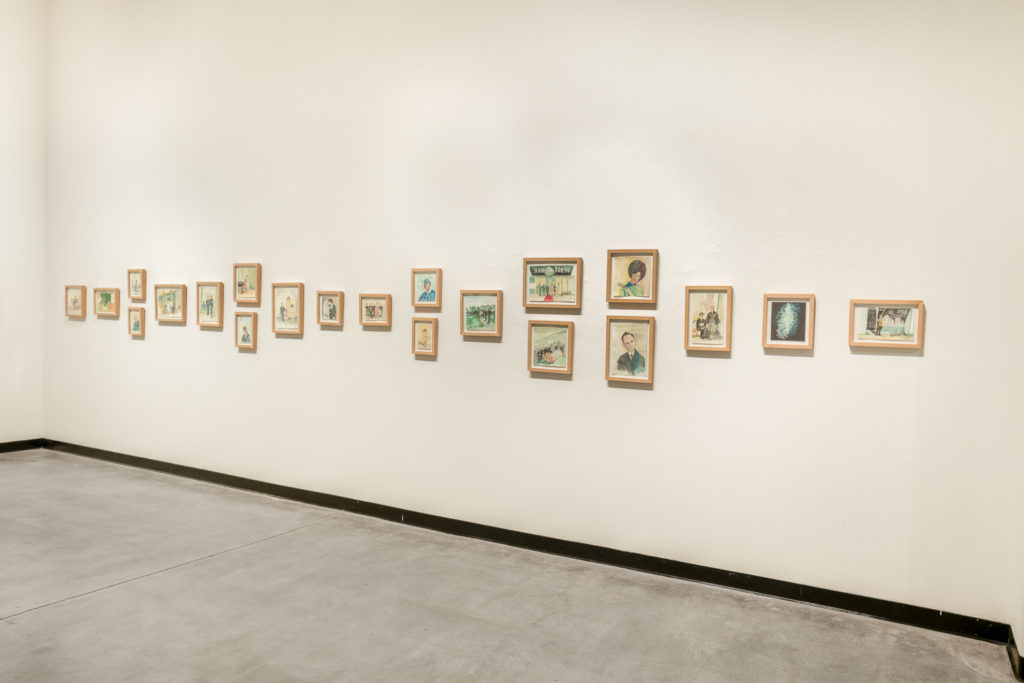An Exhibition by Alan Nakagawa
May 8 through September 18, 2019.

In spring and summer of 2019, the CSUDH community and the public were invited to this eye-opening exhibition featuring materials found in the newly rediscovered Ninomiya Photo Studio Archive. The exhibition reflected the culmination of a year of research and exploration by artist Alan Nakagawa, PRAXIS Artist-in-Residence. Nakagawa spent the time investigating the Archive, built from the Ninomiya Photo Studio, a business located in Little Tokyo from 1949 to 1970. The collection contains over 100,000 prints and negatives documenting the Los Angeles Japanese American community. Nakagawa was tasked with modeling new ways in which contemporary artists can engage with CSU’s archival materials.
Unfinished Proof Ninomiya is the result of Nakagawa’s year-long work in the archive via the new artwork he created, a zine resulting from a series of workshops with PRAXIS program participants, and a collaboration with The Gerth Archive to present photographs and objects from the collection.
The exhibition featured multidisciplinary elements that created what Nakagawa considered a time machine — a look at the past through the photographs and lives of everyday people. A panorama created from historical photographs and contemporary field recordings was situated in the center of the gallery as the physical manifestation of the time machine, inviting viewer/participants to suspend their current relation with time and engage with the personal histories on view.
The second installation in Unfinished Proof Ninomiya was the transportable photo studio that Nakagawa created. It has the appearance of a historical photo studio, and the artist used it to stage a series of events inviting students and community members to have their portraits captured.
The exhibition also included a series of watercolor sketches that recreate, reimagine, and recapture the Ninomiya photographs. In addition to historical photographs, Nakagawa included carved birds, both historical objects from the archive and birds he carved that relate taxonomically to Los Angeles and conceptually to those whittled during imprisonment in the internment camps.









